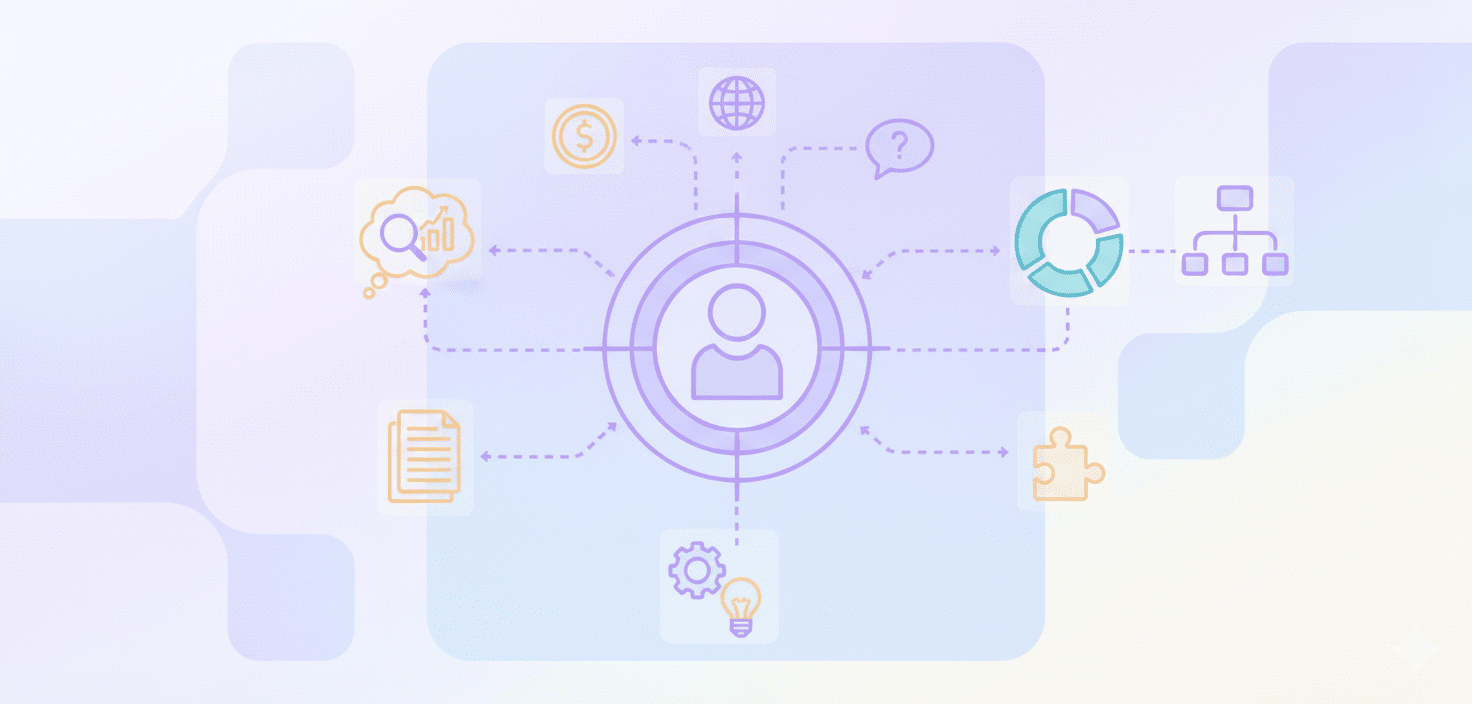Market Analysis
What is a SaaS Ideal Customer Profile (ICP)?

What is a SaaS Ideal Customer Profile (ICP)?
A SaaS Ideal Customer Profile (ICP) is a comprehensive description of a company that would benefit most from your SaaS product or service.
To identify traits that genuinely set your target audience apart, it goes beyond simple demographics.
SaaS companies with a defined ICP may experience up to a 68% change in win rates (LinkedIn, n.d.), potentially influencing advertising focus and sales efficiency (M1-Project, n.d.).
To ensure it meets actual market demands, remember that a well-defined ICP is dynamic and must be updated frequently to reflect market shifts and your product’s development.
What are the key characteristics of an ideal SaaS customer?
The ideal SaaS consumer exhibits a combination of firmographic, behavioral, technographic, and demographic characteristics that are highly aligned with the value proposition of your product.
- Demographic and Firmographic Traits
- Examples include revenue, industry, and firm size.
- Give a basic idea
- Behavioral Characteristics
- Pain points, purchasing triggers, and motives are a few examples.
- Show that the client requires a SaaS solution.
- Tech Features
- Examples include preferred technologies, integrations, and current tools.
Example:
A marketing automation SaaS might target mid-sized e-commerce businesses (firmographic) struggling with lead generation (behavioral), using HubSpot (technographic), and aiming to increase sales conversion rates (desired outcome).
Understanding these traits allows for targeted marketing and sales efforts, improving customer acquisition and retention by focusing on customers most likely to benefit from your SaaS product.
How do you build an ideal customer profile for your SaaS?
Building an Ideal Customer Profile (ICP) for your SaaS begins with data collection and ends with continuous refinement.
- Gather Data
- Analyze:
- Demographic, psychographic, behavioral, and transactional data
- Sources: surveys, interviews, website analytics, CRM platforms, purchase histories
- Develop an ICP Template
Include:
- Industry
- Company size
- Annual revenue
- Geography
- Technology stack
- Pain points
- Buying preferences
- Refine Continuously
- Use real data and insights to update your ICP as the market and product evolve.
Example:
A SaaS company might initially target all small businesses but refine its ICP to focus on marketing agencies with 10–50 employees that use specific marketing automation tools and struggle with lead generation.
- Collaborate with Sales Teams
Include sales teams in the ICP creation process to leverage their direct insights into customer behaviors and preferences for higher accuracy.
How does an ICP differ from a buyer persona?
An ICP identifies the ideal company fit, focusing on broad characteristics, while a buyer persona represents an individual customer within those companies, detailing motivations and pain points.
|
Aspect |
Ideal Customer Profile (ICP) |
Buyer Persona |
|
Focus |
Company-level fit |
Individual decision-maker |
|
Purpose |
Targeting & segmentation |
Personalized marketing |
|
Data Type |
Firmographic, technographic |
Behavioral, psychographic |
|
Outcome |
Strategic targeting |
Tactical engagement |
ICPs are strategic frameworks for identifying the right companies, while buyer personas help tailor personalized campaigns.
What trigger events prompt ideal prospects to seek your SaaS?
Trigger events are specific occurrences signaling a prospect’s readiness to explore SaaS solutions.
Examples of Trigger Events
- Organizational changes or restructuring
- Industry shifts or new regulations
- New funding rounds or job postings
- Engagement with relevant content (webinars, whitepapers, etc.)
- Identification of and reaction to these trigger events may influence the duration of the sales cycle and conversion rates.
However, trigger events should always be used alongside qualification criteria to confirm prospect readiness.
What are the key steps in my ideal customer's buying process and potential obstacles?
Here are the steps and challenges:
Key Steps in the Buying Process
- Problem/Need Recognition — Customer identifies a challenge your SaaS can solve.
- Research & Evaluation — Customer explores available solutions and reviews vendors.
- Purchase & Implementation — Multiple stakeholders make a decision and deploy the solution.
- Post-Purchase Evaluation — Customer assesses performance, ROI, and integration success.
Example:
A marketing team struggling with lead generation might research CRM software, test free trials, and purchase the solution that best fits their workflow and budget.
Potential Obstacles
- Complex decision-making (often 5–8 stakeholders)
- High initial customer acquisition hurdles
- Integration or workflow compatibility challenges
Conclusion
Establishing your SaaS Ideal Customer Profile is essential for focused expansion and effective resource management.
You can improve your marketing and sales efforts by identifying trigger events, mapping the purchasing process, creating a thorough ICP, and comprehending the essential traits of your ideal client.
Concentrating on suitable clients may relate to revenue generation and the establishment of sustained, reciprocal connections, with implications for long-term viability in the SaaS market..